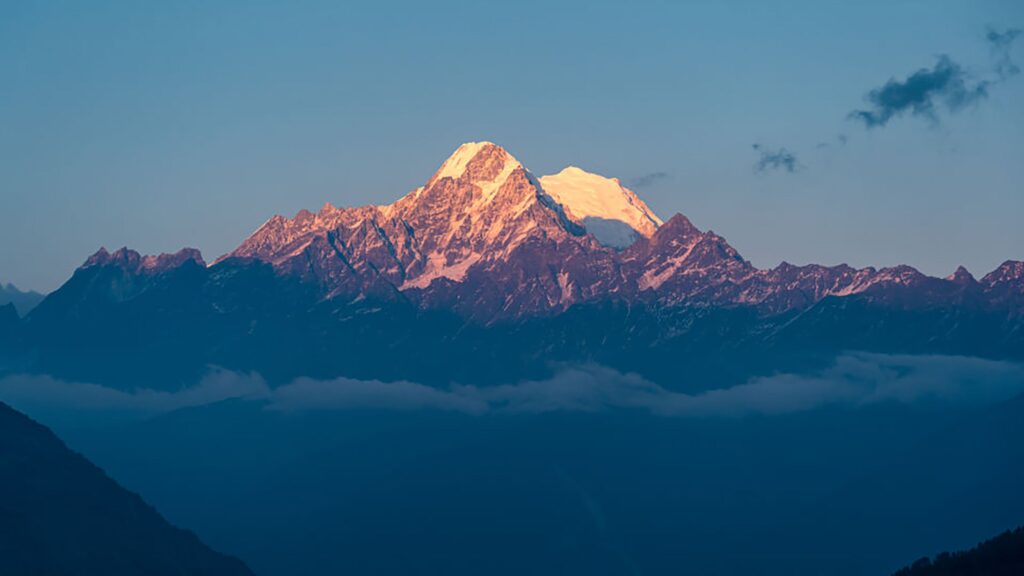As a way to promote tourism to under-visited corners of the country, the government wants to entice climbers to venture beyond Mount Everest
Nepal is waiving climbing fees on 97 peaks (Photo: Ambir Tolang/NurPhoto via Getty Images)
Published August 12, 2025 03:45PM
While would-be Everest climbers brace for a major price hike for permits next month, the government of Nepal has decided to waive climbing fees for 97 of the nation’s most remote, rugged mountain peaks over the next two years.
The news was reported by The Kathmandu Post on August 9.
Officials said the move is aimed at promoting tourism in far-flung areas of the country. Seventy-seven of these peaks are located in Nepal’s Karnali province with the remaining 20 in Sudurpaschim. The two provinces are located on the western edge of the country, along its border with India. Of the 77 peaks that no longer require government royalties, the highest surpass 24,000 feet elevation.
“These are some of the most remote parts of Nepal,” Himal Gautam, director at Nepal’s Department of Tourism, told The Kathmandu Post. “Despite their breathtaking beauty, the number of tourists and mountaineers here is very low as access is so difficult. We hope the new provision will help.”
Gautam added the permit fee waiver would help promote tourism and improve economic conditions for people in the least developed areas of Nepal, Reuters reported.
Outside contacted the Nepal Tourism Board and the Nepal Mountaineering Association for a full list of the peaks included in the fee waiver. We will update this article accordingly.
Bradley Mayhew, a mountaineering expert and Outside contributor, says the move may encourage some tourists to “get off the beaten track.”
“The relevant peaks are in remote far Western Nepal, fairly expensive to access, and had climbing fees of around $500 compared to Everest’s $11,000, so it’s not quite the saving it might seem!” Mayhew added.
The decision comes as the cost to climb the world’s highest mountain will rise from $11,000 to $15,000 beginning in September. For smaller mountains, most permit fees will increase to $350 from a previous $250.
While the world’s highest mountain dominates many climbing headlines, many tour leaders contend that Nepal’s best trekking experiences can be found outside of the Everest region. Even under normal permitting conditions, many of these summits can be accessed for just $22 – a fraction of the cost required to trek Everest.
Even so, historically, interest from the climbing community in these remote regions has been low. Between 2023 and 2025, just 68 climbers visited the 97 peaks included in the fee-waiver program, generating roughly $10,000 annually, reported The Himalayan Times. By comparison, last year nearly $6 million was earned from climbing permits nationwide, more than three-quarters of which came from those pursuing Everest.
Whether these remote communities have the resources needed to host a potential influx of climbers and mountaineers remains to be seen. Bordering southwestern China, Nepal’s Karnali and Sudurpaschim provinces are home to some of the poorest communities in the mountainous country.
It’s unclear if the Nepali government will support additional initiatives to improve access or infrastructure required for those interested in exploring these relatively untouched areas.
Madison Dapcevich is an associate editor at Outside.
As a science journalist and ocean explorer, she’s investigated misinformation campaigns on social media, embedded in Alaskan archaeological digs, and contributed to the discovery of deep-sea organisms in the Central Pacific.
But she’s most happy in her western Montana home whitewater kayaking, rafting and backcountry skiing. When not plucking away at a keyboard, Madison teaches yoga and mountain bikes with her two Australian shepherds, Cholla and Poppy, through Missoula’s Rattlesnake Wilderness. (edited)


